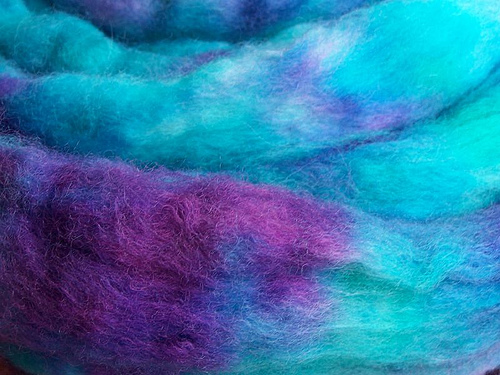
The difference between worsted and woolen is something that every beginning spinner (myself included) grapples with. I have learned a lot since I wrote this first, fumbling article on the topic.
What is worsted spinning?
Structurally, worsted yarn is smooth, with all the fibers in alignment. To get a true worsted yarn, you have to start with the right fiber prep. Combed top has all the fibers combed into alignment so that they are parallel to each other.
Which fibers should you spin worsted?
One rule of thumb is that if you want to preserve the luster of your fiber, spin it worsted. If you have a silk blend, or a high-luster wool, it will be shiniest if you spin it worsted style.
Think of a sheet of aluminum foil. When it's smooth, it's shiny. If it gets crumpled up (as happens to fibers when you spin them woolen style) it loses that shine.
How do you spin worsted?
This is usually described as "inchworm-style." Alden Amos clarifies it as being the style where you never let any twist into your drafting area. Feed the fiber into the twist, not vice versa.
What is woolen spinning?
Woolen is far more common in hand-spinning. It produces a lofty, soft jumble of fibers. Not as durable as woolen-spun, but often more soft and squishy.
Rolags, batts, and carded roving are all ideal for woolen spinning.
Which fibers should you spin woolen?
I find it depends on the fiber prep. The easiest way to spin woolen requires that your fiber be loose and lofty, so that it practically drafts itself.
Woolen spinning is also ideal for fibers with a lot of crimp, and shorter-staple fibers.
How do you spin woolen?
Long backwards draw is the best way to spin woolen. Pulling back against the twist, and letting the twist into the drafting area. Basically letting the twist do all the drafting work for you.
Image courtesy Flickr/Carissa Marie

0 comments